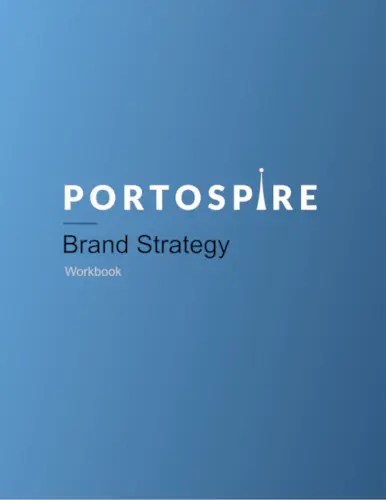Brand Strategy
Brand Statement
Your brand statement is the most important element of your brand that you will ever create. It will be your inspiration for every message, post, and advertisement that you will publish. A brand statement is more than a jingle or tagline; it’s a brief glimpse into who you are and what you do. Here is why it’s so important to get it right.

Clarity
Without a clear brand statement, your business will be throwing spaghetti at the wall instead of presenting who it is. By crafting this statement, you’ll be able to speak directly to your target audience clearly and confidently.
Value Proposition
In an oversaturated digital marketplace, getting lost in the crowd is very easy. Your brand statement will set you apart from the competition and present a reason for your audience to choose you. By defining this statement, you tell your audience the pain points you solve and the benefits they will gain in a way no one else can. It becomes the way you are quickly identified.
Unites the Team
Having this statement allows your company to focus on providing those defined solutions. It isn’t about what you say, it’s about what you do across your company. This shared vision will be consistent throughout every interaction with your clients.
Brand Story
Telling your brand story invites people to peek behind the curtain and see why you brought your company to life. Sharing that brand story across different platforms brings it to life. It allows people to interact with your brand in an entirely new way.

Connection
Telling your story gives your audience a way to relate with you. It can build an emotional bond and strengthen their loyalty to your brand. It puts a face on a cold, uncaring corporate entity. Sharing your purpose, values, or struggles invites customers into your journey and opens the door to collaboration. Building connections is stronger than any other marketing strategy.
Trust & Loyalty
A relatable and authentic story helps build trust. It is an opportunity to show growth and vulnerability. Telling your story adds a reason why you do what you do beyond monetary gain. Your story should be impactful, entertaining, and inspiring. When your audience understands your mission, they are more likely to support it. It builds loyalty and becomes a part of the story your advocates will pass along to others.
Its Marketing
It’s the first piece of evergreen content that you can create. Something that can be told in a plethora of ways across multiple channels. Where you can use it:
- Website
- Social media
- Email campaigns
- Ads
Telling your brand story is more important for building a sustainable business. It’s a way to share your message with the world in a way that resonates with people. Let them know your purpose, where you are coming from, and where you are going.
Client Analysis
Your brand statement and story are good tools for telling who you are, but detailing your processes and products is how you back it up. This is where the rubber meets the road. Your brand isn’t just the words you came up with; it’s the consistent experience you give your clients. By understanding and defining the following elements about your business, you won’t have to tell clients who you are, because they will experience it.
To your client
- Clearly defining your process for delivery creates an expectation that builds trust. When you can let your client know the details involved with each step, it fills them with confidence in your abilities. Define your process so it is repeatable and predictable. You don’t want to go into projects just winging it. Use a proven method and give your clients confidence to go with your business in the future.
To your business
- When you have tested your systems and templates, you know the exact steps you need to take with every client. This allows you to rapidly onboard and adapt to new projects or team members without chaos or having too many cooks in the kitchen. Take the time to define your process and save time and energy in the long run. There is no need to reinvent the wheel with every project.
To your team
- When you lead with your passion or purpose, it shows throughout your company. When your team is genuinely enjoying their work or passionate about the product, you build a far more authentic brand. Learn what motivates your team, beyond pizza parties, and watch their satisfaction get passed along to your consumers. Know your processes so you can focus on more important things.
How you treat your team is how they will interact with your customers. Above all, deliver on your promises consistently by creating a system for how to do just that.
Analyzing the Competition
Scouting out the competition will open your eyes to new opportunities. It will give you data to build a competitive edge and stand out. You need to spend the time to understand what you are up against if you want to be successful.
It sheds light on what they are missing
Everybody wants their brand to stand out, but you can’t hope to do that if you don’t know what you're up against. Begin by making a list of:
- What they do well
- What they don’t do well
- What they are missing
Look for gaps in the market that you can fill and be the only game in town providing for that need. It will become your unique differentiator and allow you to solve your audience's pain point. Set yourself apart from the crowd by first learning about who is in the crowd.

Build a system to satisfy their needs
Others have built systems that work for them. You can borrow from their system to create your own to meet a different population's needs. Look for opportunities to improve their strategies and avoid their mistakes to create your own successful system. Where to start:
- What's working for them?
- What are their popular items/services?
- What marketing are they using and does it have engagement?
Look for ways they’ve dropped the ball. Check out the competition's reviews and make note of what they fall short on. Learn from their weak points and position yourself to be strong in those areas.
Gain insight into who your target audience is
Competitive analysis will give you an idea of your target audience by seeing who has worked with your competition. Make note of who and how they talk to this audience and learn how to interact with them. Refine your messaging to connect with the target audience speak directly to their wants and needs.
See how your audience talks and their tone, and choose a brand voice that will resonate with them. Analyzing your competition and audience interactions is about bringing understanding to them. It lets you focus on your approach and provide relevant information to solve their problems.
Know your Customer
If you don’t know your customer, how can you hope to get their attention? Don’t build your brand on assumptions; do some research and build your brand to resonate with your clients. Collect data, build insights to do something others struggle with, and connect authentically with your clients.
Stop seeing what sticks
You may think you know what people's needs are, but how will you know without researching them? Focus on solutions for a specific group of people, learn their pain points, challenges, or wish lists. Building solutions is great unless nobody needs or wants that solution. Research will help you identify what solutions need to be solved and how you can fill that role.
Be relatable
When people aren’t industry savvy, how will they know how many gigawatts they’ll need in order to procure a solution to the osmosis of the falling and rising geologic word salad here? Learning how your audience speaks lets you craft material that speaks directly to them.
It provides you with what drives their motivation to make purchases. Using their language back to them holds up a mirror that makes your company more relatable. That relatability builds trust, and that trust builds a loyal base of customers likely to do repeat business.
People purchase for a variety of reasons. Learning what those reasons are will give you an understanding of their emotions. By uncovering their values, dreams, and motivations, you can speak and connect with their core reasons for seeking that solution.
Ultimately, it shows that you care about your customers. By learning and connecting with their emotions, you will build a loyal and sustainable community. A brand built with a deep understanding of its customers will stand the test of time.

Lead Them to You
A business can’t survive on its own without customers. At some point, you need to generate leads who show interest in what your business has to offer. Generating leads consistently to funnel into your sales pipeline provides it with the necessary fuel to operate. Without a system for this, you will always be treading water and chasing people for sales.
Testing the brand statement
After completing your brand statement, test it with your leads to see if it's resonating with them. Getting your wanted target audience to respond will validate that your brand is the solution they’ve been looking for.
Don’t stop gathering information. Every lead that comes in gives you information about what they are responding to from your marketing. Talking to your leads allows you to:
- Learn about emotional connection:
Are they responding to the pain points, desires, or wishes you thought they would? - Validate your message:
Are your leads there for the right solutions? Do your services actually match their pain points? - Discover new opportunities:
Interacting with potential leads will give you insight into problems you haven’t considered. This can lead to innovative solutions and new market opportunities.
Sustainability in your business
Consistent leads will be the key to scaling your business when you are ready for that step. Don’t rely on word of mouth, manual outreach, or expensive marketing firms. You can and should build a sales funnel that generates leads to convert clients as needed. With multiple levels of offers that keep warm leads warm, you can control the growth of your company, team, and services.
Your brand will need customers to grow and thrive. A warm community of leads is the fuel that will scale your business to the next level. Take the time to build a system to generate leads and watch your wishes become a profitable reality.
